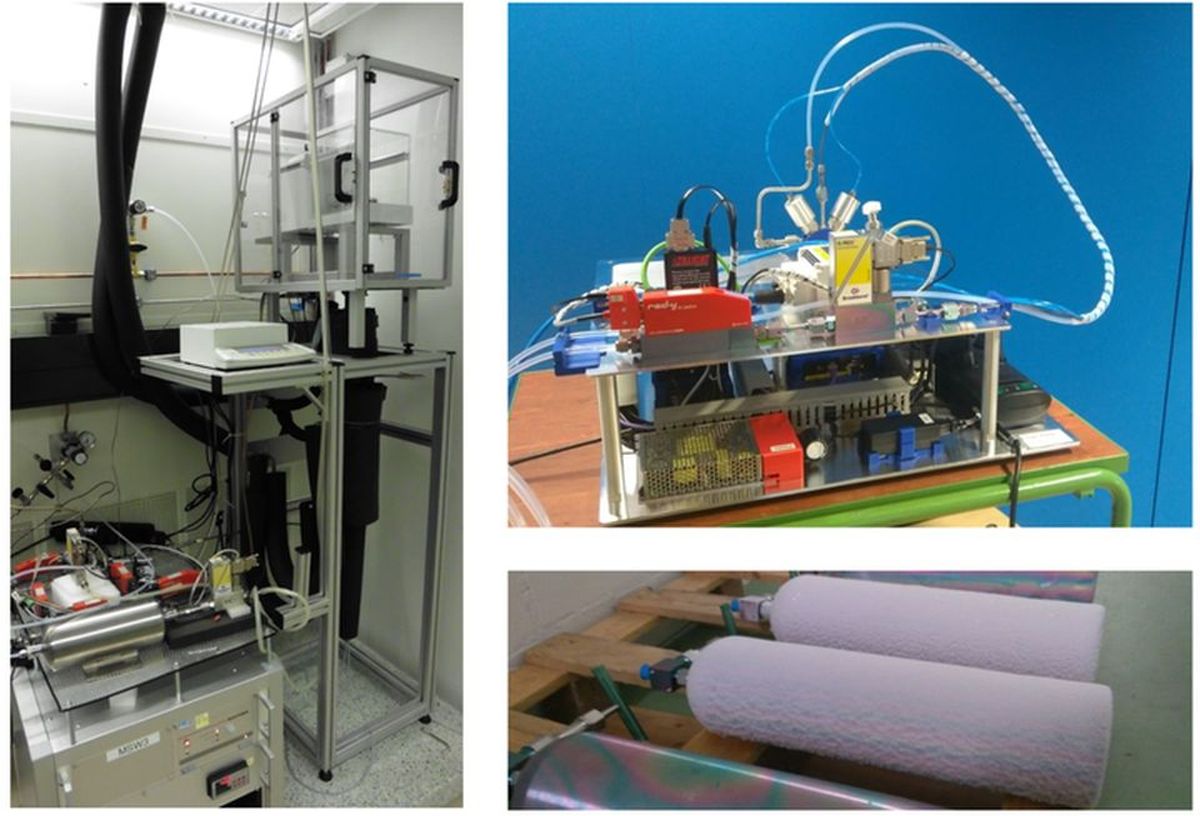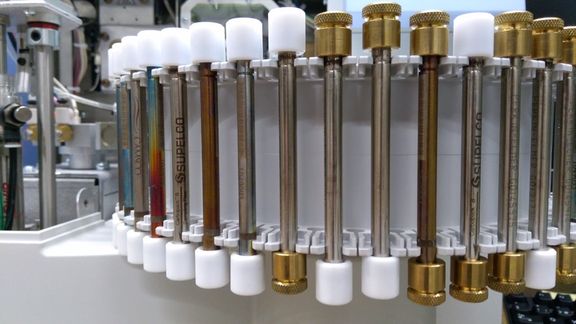Welcome to the blog of the project MetClimVOC!
June 2021
One year of project MetClimVOC!
Traceability, accuracy, metrology, priority volatile organic compounds (VOCs), surface effects, adsorption… By now, these are some terms that might be familiar to you, if you have being following the blog the last months. With this post, we want to present you the progress done by the project in the last year, as well as the difficulties encountered.
# First year of activities
Already one year since the kick-off meeting! Time flies.
Despite the COVID-19 restrictions and the fact that the consortium could not meet face to face since then, great progress on the planned activities was achieved. In this section, you can find more information about the progress in each technical work package (WP) of MetClimVOC.
# WP1: VOC reference gas mixtures
The first task of WP1 consisted in selecting VOCs relevant for climate in collaboration with stakeholders. A priority list with the compounds divided into three categories: oxygenated VOCs (oxy-VOCs), terpenes and halogenated VOCs was elaborated. The list includes information on the target range of amount fraction and the metrological requirements. You can find more information on the blog post of November 2020.
The preparation and validation of reference gas mixtures (RGMs) started thereafter. The aim is to produce RGMs of the selected compounds at low amount fractions and uncertainty. For oxy-VOCs and terpenes the target amount fraction values are between 100 - 1000 nmol/mol with relative expanded uncertainty (k = 2) below 5%. The target amount fractions for the selected halogenated VOCs are below 1 nmol/mol with relative expanded uncertainty of 3 % or lower. Despite retarded delivery of some purchased materials and overlapping with other activities, these activities are progressing favourable. The methods for preparing RGMs will be the object of one of the coming posts (November 2021). Moreover, in the section Training, you can find more information.

Within this WP, we collected whole air samples at the mountain site Rigi-Seebodenalp (Switzerland). These samples will be used — after their certification — in the comparisons taking place within WP2, which are planned for the second half of MetClimVOC.
# WP3: Development and improvement of measurement methods
To improve the sampling methods for VOCs, the consortium ran several tests to identify the effects of line material, particle filter types, water removal systems and ozone scrubbers on the detected VOC amount fractions. Despite some delays caused by technical/instrumental issues, most of the tests were finished and the collected data are being currently processed. Results will be presented at CIM 2021 (session S4). A new publication by POLITO additionally presents effects of sampling line material on acetone
Another task linked to WP3 was the evaluation of sorbent tubes as a sampling method for the off-line measurement of oxy-VOCs and terpenes. Several tests to determine the maximum capacity of sorbent tubes, optimal sampling flow rate, sampling efficiency at different sampled air humidity and the impact of storage time and temperature were ran during the first months of project. Results will soon be presented in open access publications. At least one manuscript and a recommendation report on the most suitable sorbents for oxy-VOCs and/or terpene measurements are being written. Data from the interlaboratory comparison of adsorbent tube-based measurement method will be also included and announced via the MetClimVOC website.

The task on the validation of spectral parameters for remote sensing techniques to measure halogenated VOCs, also shows considerable progress. A new remote sensing contact group was established comporising members with expertise on stellite remote sensing, spectroscopic databases and experimental determination of absorption cross-sections. In consultation with this groups, long-lived halogenated VOCs of interest to the remote sensing community (CFC-14, CFC-12 and HCF-23) were selected for further analysis in WP3. Specifics and metrological requirements for spectral parameter validation of these halogenated VOCs were also determined, and included in a report. In addtion to the general quality of the spectral parameters used in remote sensing networks, respective shortcomings and need for improvements were added. Furthermore, the experimental setup for the Fourier-Transform Infrared (FTIR) measurements and the pressure and temperature combinations to be used were defined to cover the relevant atmospheric conditions and to impove the spectral data quality in the second half of MetClimVOC. This information and the planned experiments for a SI-traceable characterisation of VOC spectral parameters will be the topic of one of the coming posts.
# WP4: Creating impact
MetClimVOC has been particularly active in activities related to knowledge transfer and training .
Patners presented the project and/or preliminary results in different conferences and meetings: Swiss Geoscience Meeting (SGM, Nov. 2020), Biennale della Technologia (Nov. 2020), ACTRIS-CiGAS NOx and VOC quality assurance meeting (Apr. 2021), and the Eurachem Scientific Workshop (May 2021).
Activities were also disseminated to a range of standardization bodies and metrological committees, such as EURAMET TC-MC (Technical Committee on Metrology in Chemistry) SCGA, as well as CCQM-GAWG and CEN TC 264 Air quality.
In addition, the first peer-reviewed publication of the project was accepted. The article, titled "Reproducibility of the quantification of reversible wall interactions in VOC sampling lines", describes acetone losses due to surface effects of the VOC with the walls of Sulfinert® coated test pipes.
Last March, we organized the first open training of the project that focused on topics such as atmospheric measurements of VOCs at monitoring stations, metrological vocabulary and the preparation, traceability and uncertainty of static and dynamic reference gas mixtrues. You can visit the section Training to read the presentations and/or watch the videos.
You can find more information about the project status on the last publishable summary of MetClimVOC.
# About the authors

Maitane Iturrate-Garcia, Federal Institute of Metrology METAS. Environmental scientist, with background in marine pollution, environmental chemistry, plant ecology and climate change. Since 2018, she is involved in the dynamic preparation of reference gas mixtures of reactive gases at METAS Gas Analysis Group. Previously, she participated in the European projects CarboEurope-IP, GHG-Europe, Carbo-Extreme and ICOS preparatory phase.
# Latest post
Go back to the latest blog post.
# Other posts
In this section, you can find the links to other blog posts.
February 2022 - Reference gas mixtures for oxy-VOCs
December 2021 - Terpenes in the atmosphere
October 2021 - Monitoring halogenated VOCs from the space
March 2021 - How gas surface interactions can affect VOC monitoring?
January 2021 - Halogenated VOCs in the atmosphere: monitoring and traceability
November 2020 - Atmospheric trace gases: VOCs, impact climate change
September 2020 - Welcome to the blog of the project MetClimVOC!